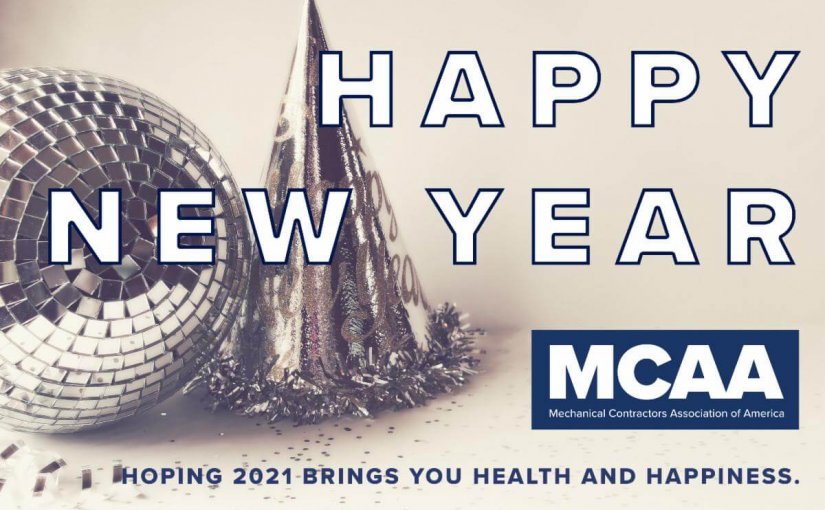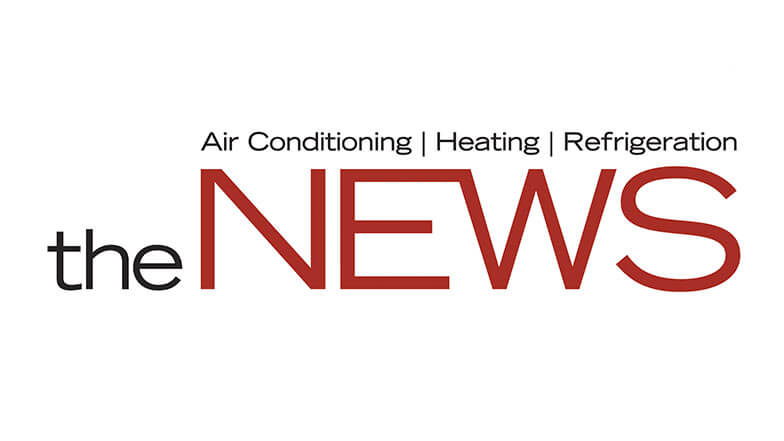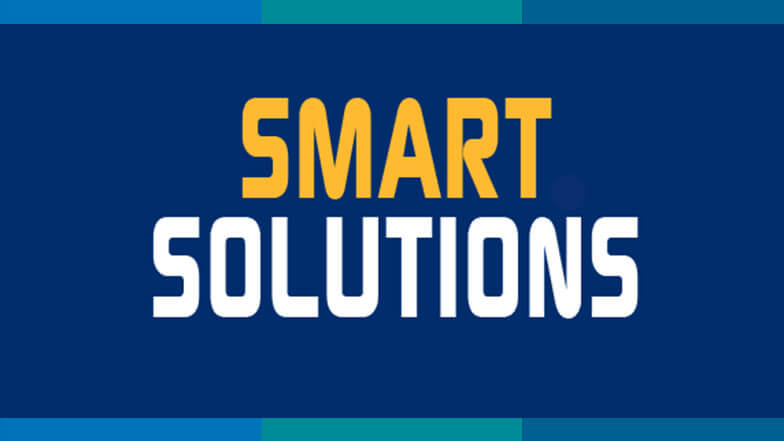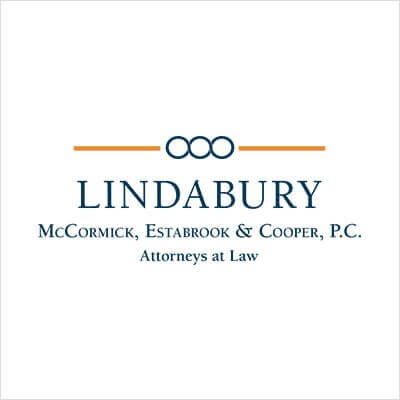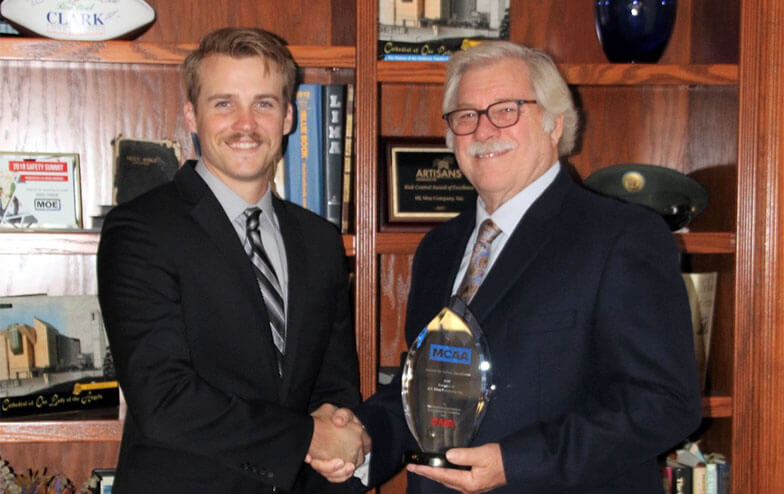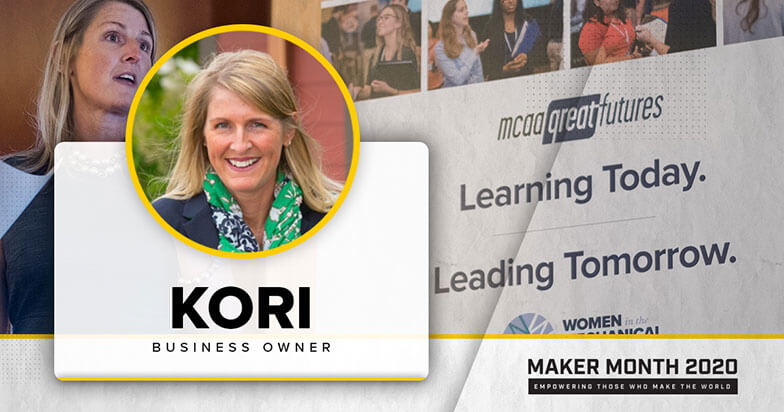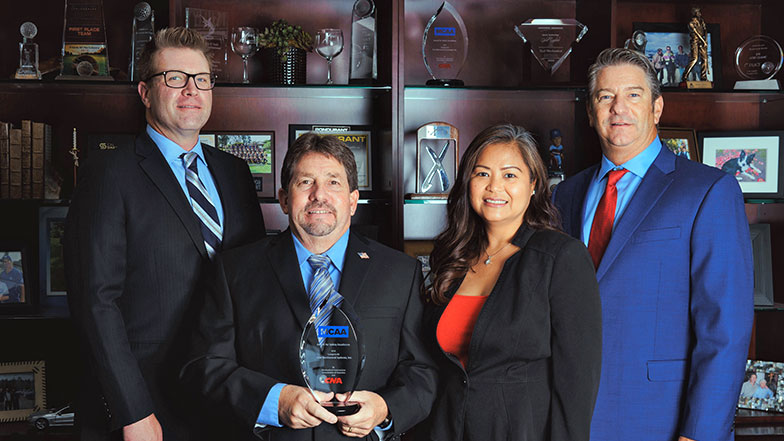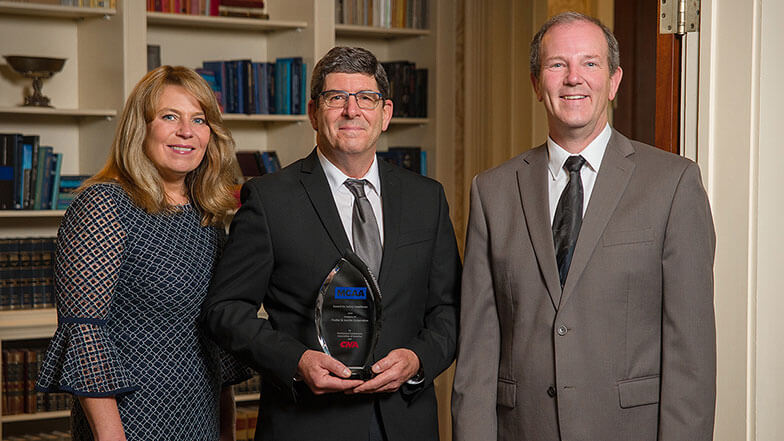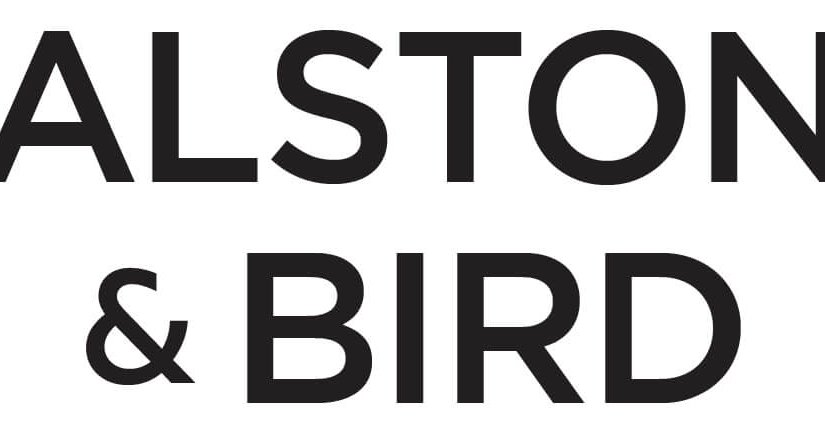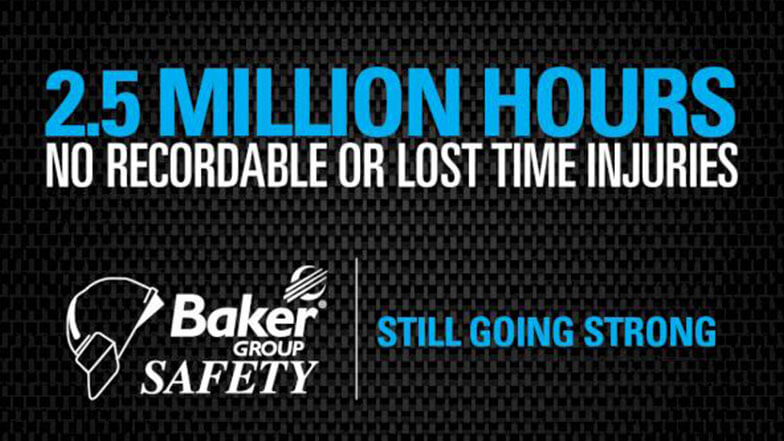As We Embrace the Arrival of 2021, MCAA Thanks You For All We’ve Accomplished, Together, in 2020. Take a Look Back at the Highlights!
As we, the MCAA family, look back on 2020 we see a year that has forced us all to change, to adapt and to overcome some of the biggest challenges to face our industry in decades. MCAA with its volunteer leadership, led by President Brian Helm and the rest of the Executive Committee, the MCAA Board of Directors, our contractor members, our manufacturer/supplier members and partners, local affiliates, volunteers who sit on our committees and Foundation and the national staff have taken the COVID-19 challenge head on. Sharing vision, talent and expertise the MCAA family has come together during 2020 to help each other like never before. Together we:
- Delivered ideas and innovation at the annual MCAA Technology Conference with help from our Technology committee, our title sponsor, Trimble, and our event sponsors: Autodesk, DEWALT and Rhumbix.
- Partnered with Dodge Data & Analytics to produce the Prefabrication and Modular Construction SmartMarket Report.
- Hosted a record number of attendees at the 17th MCAA’s Safety Directors’ Conference thanks to the Safety & Health committee, as well as our conference sponsors, CNA and MILWAUKEE TOOL.
- Launched and led five virtual AEC best practices sessions with the guidance and leadership from the Association Executives Council.
- Connected with industry improvement fund trustees and local association executives at the Industry Improvement Funds Virtual Seminar thanks to the Industry Improvement Funds Committee.
- Partnered with the MCA of Northwest Ohio to produce the Field Leaders Conference in Toledo. Special thanks to presenters Greg Fuller, Mark Rogers, Chris Haslinger, John Koontz, Kevin Dougherty and Mark Breslin.
- Wrapped up classes 75 and 76 of the Institute for Project Management (IPM) with 113 graduates and our 16th Advanced IPM Class (AIPM) with help from the PMEC committee.
- Added five new courses to the NEI seminars list with our new instructors Greg Fuller and Mark Rogers.
- Organized, with the guidance from the MSCA Board of Managers, the ongoing Best from MSCA series where MSCA members share novel ideas and innovations.
- Presented the MSCA’s Sales Reboot virtual program, Strategies for Navigating Change and Elevating Performance in the New Economy with presenter Seth Mattison to over 450 attendees.
- Transformed the MSCA Dispatchers Professional Development Training Program to a virtual course thanks to the name sponsor, MILWAUKEE TOOL.
- Held the PCA Virtual Education Series on Plumbing Service hosted by JPG Plumbing & Mechanical Service, Inc. which included seven hour-long module and panel discussions with a total of 281 live attendees. Special thanks to the Plumbing Contractors of America Board of Directors, JPG Plumbing & Mechanical and Bradford White for their contributions.
- Paired 25 seasoned professionals in the mechanical industry with 25 females new to or looking to join the industry in the ongoing WiMI Mentor/Mentee Program with help from the Women in the Mechanical Industry Steering Committee.
- Introduced the new Preparatory Institute for Project Management (PIPM) as a 12-week online curriculum and congratulated 192 graduates in the first year due to the recommendation and guidance from the Project Managers Education Committee.
- Hosted the GreatFutures Virtual Fall Program with 333 registered attendees and 17 webinars because of the planning and recommendations from the Career Development Committee.
- Received 19 submissions for the MCAA Annual Student Chapter Competition which was generously provided by West Chester Mechanical Contractors in Aston, PA.
- Offered 604 registered members a virtual tour of Modern Companies’ fabrication operations, which uses MSUITE’s FabPro in the MCAA Virtual Fab Mini.
- Launched the Sponsor Spotlight series of interviews as a way for our contractor members to learn more about the Manufacturer/Supplier Council (M/SC) Governing Board including their products, relationships with MCAA and what being a member of the M/SC Governing Board means to them. Thanks to our M/SC Governing Board and the MCAA Executive Committee for their participation and time.
In addition to our education programs, MCAA was dedicated to providing more than 500 business resources, COVID-19-related and not, free as a benefit of membership, including:
- The 2020 edition of MCAA’s Change Orders, Productivity, Overtime – A Primer for the Construction Industry publication providing guidance on costs associated with unplanned events, circumstances and factors that may impact the outcome, productivity and schedule of construction projects. Thank you to Paul Stynchcomb of Vero Construction Consultants Corp for his contributions, and the Management Methods Committee for their contributions of time, insight and experience.
- MCAA’s 2020-2021 Tool & Equipment Rental Guide web portal has been updated thanks to MCAA’s partnership with EquipmentWatch, the industry leader in equipment data.
- The next generation of MCAA’s most valuable resource, the WebLEM+Plus including a complete buildout of the Work Activity Method, unique data identifiers, the first-ever drawing content standard and the ability to attach drawing content to each labor unit. Thank you to U.S. Engineering for donating its drawing content library, Trimble for its Building Data and SysQue content and the MCAA WebLEM Committee for their contributions.
- With the help and guidance from the Safety & Health Committee, a guide to Safe Pressure Testing of Steel and Copper Piping Systems, guidance on Creating a Contractor Ergonomics Program to Reduce Soft Tissue Injuries Among Construction Workers, a Refrigerant Safety Training Resource and Tailgate Safety Talk, an updated Model Safety Program for Mechanical Service, an updated Model Safety Program for Mechanical Construction, and a Model Fall Rescue Program and Plan.
- The COVID-19 Resource Center with more than 180 COVID-19-related resources including administrative and regulatory actions, information and analysis of the PPP, emergency funding analyses, and letters and forms to customize.
- A COVID-19 Contingency Webinar Series including 30 recordings and presentations.
- Very timely covid-19-related safety information including COVID-19 Temperature and Symptom Screener Training, COVID-19 Return to Work Exposure Control Plan & Checklist, COVID-19 Return to Work Exposure Control Plan Questionnaire, COVID-19 Return to Work Employee Safety Training, COVID-19 Return to Work Exposure Control Plan Test & Answer Key and COVID-19 Regulatory & Legal Guidance.
Thank you to all 55 individuals who donated to the MCAA PAC, including the time our Government Affairs Committee worked tirelessly meeting with countless Congressional and Senate office’s as well as our sister associations and our labor partners at the UA to push our agenda forward. We will continue to be your voice in the nation’s capital! If you would like to donate yourself, please visit the MCAA website.
Thank you for the 52 donations to the John R. Gentille Foundation (JRGF) so we can continue to provide funding to students, faculty and MCAA student chapters. Your donations also mean that JRGF can develop innovative resources to help you work smarter and more efficiently. If you would like to see the full list of those who supported the Foundation from January 1, 2020 – December 21, 2020, or donate yourself, visit the JRGF website.
At our core, MCAA’s mission is to help the industry advance and adapt to change. 2020 has challenged us to do just that. With the constant changes and unknowns this year has brought, MCAA recommits to the core mission – we are committed to supporting you and your business as we grow the industry and overcome challenges together. As we reflect on this past year, we hope that you – our members, our family, find our resources and achievements valuable. We look forward to a new year full of more challenges and opportunities to help you!
